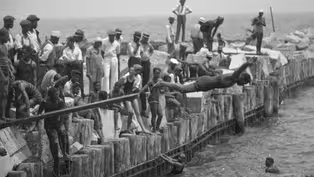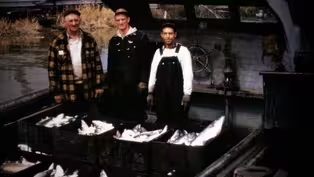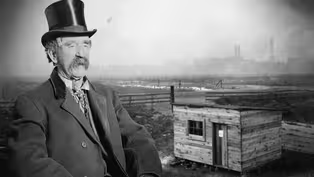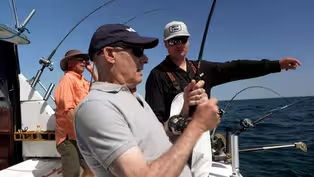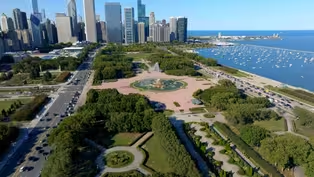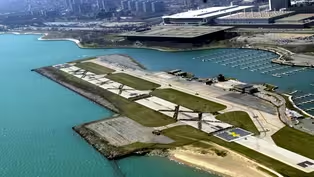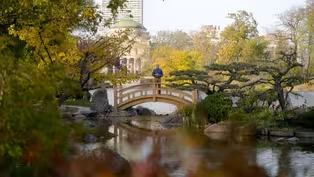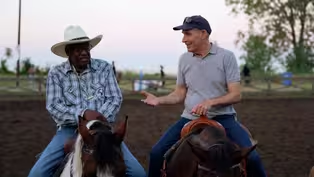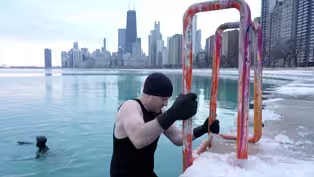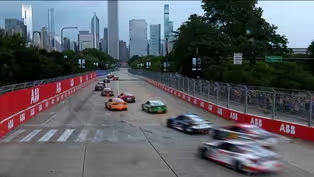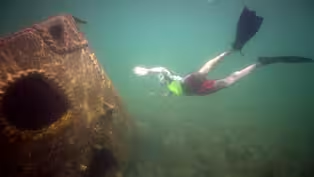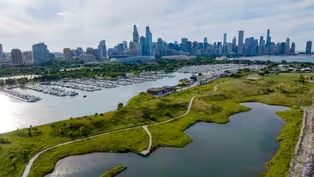
Jean Baptiste Point DuSable's Lakefront Homestead
Clip: Special | 3m 20sVideo has Closed Captions
Jean Baptiste Point DuSable built a homestead at the convergence of the river and lake.
Jean Baptiste Point DuSable is considered by many to be the first non-Indigenous settler and the founder of what would become Chicago. DuSable – along with his wife, Kitihawa, a Potawatami woman – built an impressive homestead at the convergence of the Chicago River and Lake Michigan, which back in those days was closer to present-day Michigan Avenue.
Problems playing video? | Closed Captioning Feedback
Problems playing video? | Closed Captioning Feedback
Chicago Tours with Geoffrey Baer is a local public television program presented by WTTW

Jean Baptiste Point DuSable's Lakefront Homestead
Clip: Special | 3m 20sVideo has Closed Captions
Jean Baptiste Point DuSable is considered by many to be the first non-Indigenous settler and the founder of what would become Chicago. DuSable – along with his wife, Kitihawa, a Potawatami woman – built an impressive homestead at the convergence of the Chicago River and Lake Michigan, which back in those days was closer to present-day Michigan Avenue.
Problems playing video? | Closed Captioning Feedback
How to Watch Chicago Tours with Geoffrey Baer
Chicago Tours with Geoffrey Baer is available to stream on pbs.org and the free PBS App, available on iPhone, Apple TV, Android TV, Android smartphones, Amazon Fire TV, Amazon Fire Tablet, Roku, Samsung Smart TV, and Vizio.
Boy, it doesn't get much better than this, does it?
Sailing off the coast of Chicago, taking in that beautiful skyline view.
Now somewhere hidden in that spectacular skyline is the place where you could argue modern-day Chicago began: the mouth of the Chicago River.
It takes some imagination to go back in time in your mind, clear away the skyscrapers and bridges and piers.
And you can see why Chicago's early settlers picked that spot where the river meets the lake.
(light music) One person who saw the potential arrived in the 1780s.
The man many considered the founder of modern-day Chicago: Jean Baptiste Point Du Sable.
- One of the things that has survived him is that he was a well-educated and handsome Negro with an affinity for drink.
And to me that's like a swipe right on a dating profile, if you were to ask me that.
(Geoffrey laughing) - [Geoffrey Voiceover] Lake Forest College professor Courtney Pierre Joseph is a historian and Du Sable expert.
- I just have come to love him the more and more that I've learned about him.
- This bronze bust in the shadow of Tribune Tower on Michigan Avenue marks the spot where Du Sable built his homestead.
So we've got the Apple store and you know, the Wrigley building and Tribune Tower and Michigan Avenue.
What would this place have looked like in 1790, when he settled here?
- Definitely not as fancy.
The fact that his homestead is on the mouth of the Chicago River where it meets Lake Michigan speaks of the importance of water to his story and water to the understanding why Chicago is such an important hub.
- Du Sable got around thanks to water.
Professor Joseph says he was a half-French, half-Black man from Haiti who sailed from the Caribbean and traveled up the Mississippi, Illinois, Des Plaines and Chicago Rivers.
He built good relations with the local tribes who'd lived here for thousands of years, in partnership with his wife, Kitihawa, a Potawatomi woman.
And here on the lakefront, they built a home that was much more than the modest cabin earlier historians described.
And it was quite a house, wasn't it?
- That was a big house.
It has these French-inspired doors.
There's art inside the home.
- Yeah, I've heard one detail that there were glass doors.
- Yeah.
- To have glass doors- - I mean killing the game, really, as I always like to think about him.
- Du Sable's success as a businessman and trader is documented in this bill of sale, transferring his settlement to a man named Lalime in 1800.
He'd built the 1790s equivalent of a big box store with a bakehouse, dairy, smokehouse, and poultry house.
He had a barn, 30 head of cattle, 38 hogs, and 44 hens.
- And so if we imagine his home and all of these things coming up to the water where he's able to greet people, where he's able to trade with people have these diplomatic meetings and such, the water is really important to understanding
31st Street Beach and the Red Summer of 1919
Video has Closed Captions
Clip: Special | 4m 45s | Racial violence in Chicago first exploded at a lakefront beach during the Red Summer. (4m 45s)
Calumet Fisheries and the Legacy of Commercial Fishing
Video has Closed Captions
Clip: Special | 3m 51s | Calumet Fisheries is a rare survivor of Chicago’s commercial fishing days. (3m 51s)
The Con Man Who Staked a Claim on Streeterville
Video has Closed Captions
Clip: Special | 2m 3s | Chicago’s Streeterville neighborhood was once a seedy vice district. (2m 3s)
Video has Closed Captions
Clip: Special | 5m 52s | Geoffrey Baer embarks on a fishing trip on Lake Michigan. (5m 52s)
Grant Park: Forever Open, Clear, and Free
Video has Closed Captions
Clip: Special | 6m 42s | A. Montgomery Ward launched a legal battle to preserve the lakefront for the people. (6m 42s)
How Meigs Field Became Northerly Island (Again)
Video has Closed Captions
Clip: Special | 4m 34s | A former lakefront airport has become a green space once envisioned by Daniel Burnham. (4m 34s)
Jackson Park and The White City
Video has Closed Captions
Clip: Special | 2m 1s | Jackson Park was the site of the World’s Columbian Exposition. (2m 1s)
Video has Closed Captions
Clip: Special | 3m 44s | A horseback riding club teaches equestrian skills to a new generation. (3m 44s)
Meet Chicago's Winter Swimmers
Video has Closed Captions
Clip: Special | 4m 49s | Meet the swimmers who swim in Lake Michigan year-round – even in winter weather. (4m 49s)
The Montrose Beach Piping Plovers
Video has Closed Captions
Clip: Special | 4m 35s | Montrose Beach became a nesting site for piping plovers in 2019. (4m 35s)
The NASCAR Chicago Street Race
Video has Closed Captions
Clip: Special | 2m 56s | Geoffrey Baer visits the NASCAR Chicago Street Race. (2m 56s)
Video has Closed Captions
Clip: Special | 4m 44s | A shipwreck sits just 600 feet off Chicago’s lakefront on an ancient reef. (4m 44s)
The Surprising History of Promontory Point
Video has Closed Captions
Clip: Special | 1m 32s | Promontory Point is yet another example of Daniel Burnham’s Plan of Chicago. (1m 32s)
Touring Chicago's Lakefront Trailer
Video has Closed Captions
Preview: Special | 1m 1s | Preview Touring Chicago's Lakefront, combining history and shining light on contemporary challenges. (1m 1s)
Providing Support for PBS.org
Learn Moreabout PBS online sponsorshipSupport for PBS provided by:
Chicago Tours with Geoffrey Baer is a local public television program presented by WTTW
